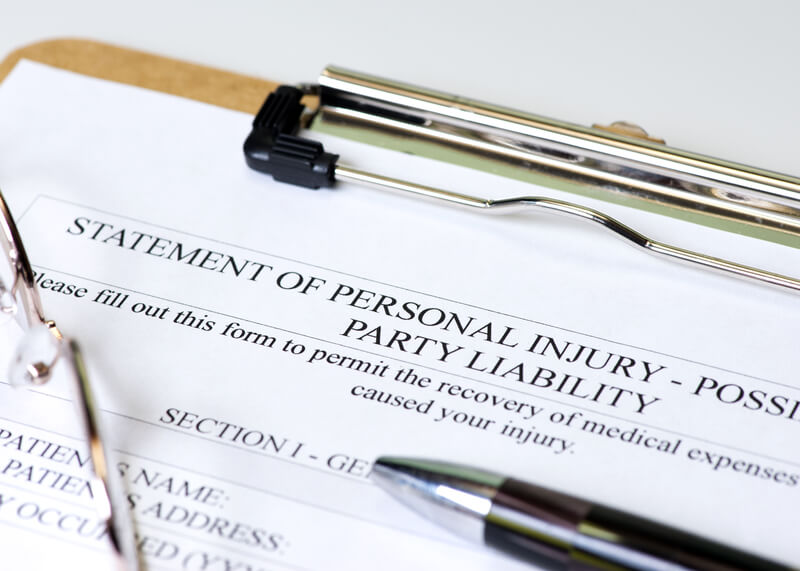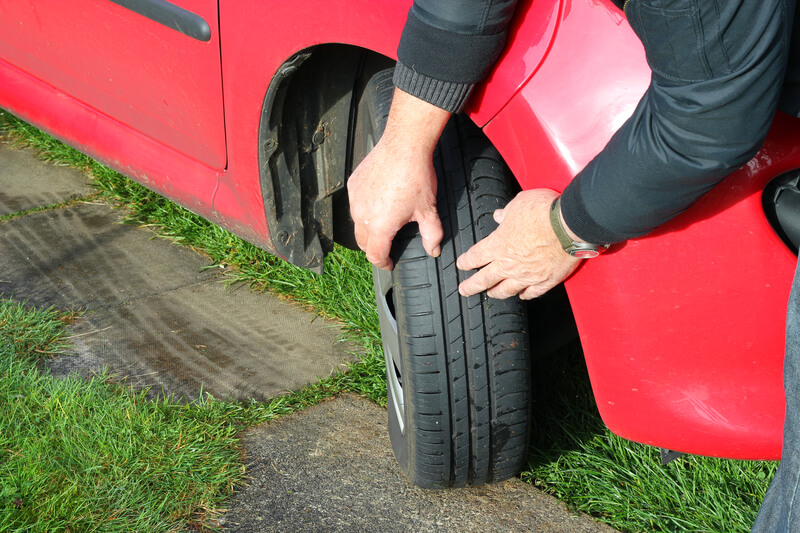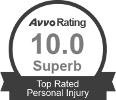Whether you just bought a pack of “student driver” stickers for your teen or you’re heading to driving school yourself this summer, congratulations! Driving is a tremendous responsibility, and taking safety seriously is a great first step to becoming a conscientious driver.
But Georgia roads can be intimidating for anyone—even the most experienced driver. Atlanta’s narrow streets change names and become gridlocked for a few hours most days. Multilane suburban parkways test turning abilities. Country back roads have low light and dangerous intersections. And highway driving can be overwhelming to a new driver – highways like I-285 around Atlanta and I-16 from Macon to Savannah are notorious for accidents.
That’s why it’s so critical to approach driving with respect and care. Your safety and the safety of your passengers, other drivers, bikers, motorcyclists, and pedestrians are at stake. And while it’s important to gain confidence and experience, maintaining a bit of the cautiousness you have now as a new driver is a good thing. It will help you avoid accidents, limit tickets, keep your insurance rates lower and create safer roads in your community.
So, if you’re still new to Georgia’s roads, what should you know, and what safety tips are critical for any new driver?
- Know Georgia’s licensing laws – In Georgia, the Teenage & Adult Driver Responsibility Act restricts full licensing for younger teen drivers. At age 15, a teen can begin the graduated driver’s license program with an instructional permit. At 16 or 17, teens who have held instructional permits for at least a year and a day can move up to provisional driver’s licenses, which allow for independent driving but still limit night driving and passenger counts. To earn a provisional license, teens have to not only pass a road test but also meet the educational requirements of Joshua’s Law. At age 18, drivers can graduate to a Class C license.
- Follow the speed limit – If you’re fresh from your driving test, you know the basic driving tips—things like keeping a safe following distance, obeying signals, and coming to a stop before turning right on red. But one of the greatest risks for teens is speeding. Between 2015 and 2019, 4,930 teen drivers and passengers died in speed-related crashes, according to the Governors Highway Safety Association. It’s important to remember that slower traffic should keep to the right lane to allow faster-moving vehicles to pass. For teens, risk also increases with each peer passenger, making following the graduated licensing requirements limiting passengers all the more important.
- Buckle up — every time – The best thing you can do to improve your outcome in an accident is to buckle up, no matter how short your ride may be. Today, more than 91 percent of Americans use seat belts, according to the National Highway Traffic Safety Administration (NHTSA), and buckling up reduces your risk of front seat fatalities by 45 percent. If you’re driving kids, make sure they’re in a car seat or booster seat that fits their size and age. If you’re pregnant or require a larger fit, seek out reliable safety information from organizations like the NHTSA on how to position belts safely.
- Practice lane courtesy – Sometimes road rules are easier to pick up through experience. Lane courtesy—the practice of staying to the right and leaving the left lane clear for faster traffic and passing—is good etiquette for new drivers to know. (And June is lane courtesy month, so if you’re a new driver hitting the road for the first time this summer, it’s perfect timing!). You’ll also want to use your turn signal to merge or change lanes and check your blind spots. If you encounter an aggressive driver following too closely, be sure you’re to the right and allow them to pass. Speeding up, slowing down, or otherwise escalating the situation may only cause the other driver to act more recklessly.
- Use extra caution in intersections – While you’re fresh on your Georgia driving laws, not everyone else on the road will be following them to the letter. Intersections are a major location for accidents: One-half of traffic injuries occur in intersections, according to the Federal Highway Administration. Be aware of the following for a safer drive:
- When approaching an intersection, slow down a bit and scan the roadway for vehicles making turns, pedestrians crossing, or cars failing to obey traffic signals and road signs.
- If you’re nearing a yellow light, try to slow down to a safe stop but also mind your rearview mirror to make sure the car behind you isn’t tailgating or distracted. Tailgating is an example of defensive driving.
- Before turning, be sure there are no pedestrians or cyclists crossing your path.
- When a light turns green, and you have the right of way, check to make sure other road users aren’t running the red light before you enter the intersection and keep a firm grasp on the steering wheel – should any quick movements be necessary.
- If you’re making a left turn, use a signal but don’t put all of your faith in an oncoming vehicle’s signaling and understanding of the rules of the road. Be certain other vehicles are slowing or stopping before you cross their path.
- Choose a car with strong safety features – If your new license will be followed up with a new vehicle, be sure to prioritize safety among other features like affordability and reliability. Sites like Consumer Reports have lists of cars, SUVs, and minivans well suited for teens. Whether you’re choosing a first car for your child or saving up for your own vehicle, look for a car with strong Insurance Institute for Highway Safety crash ratings, electronic stability control, and, if it’s used, good reliability ratings.
- Maintain your car – Once you have a car, be sure it’s road ready with regular car maintenance. Keep up to date on your vehicle’s oil changes and tune-ups to make sure your vehicle is motorway-ready. Check your tire pressure and look for signs of worn treads or cracked sidewalls and check your windshield wipers regularly in the event of rainy weather conditions. Regular maintenance will not only keep your car running at its best; it will help you spot potential problems before they grow. Find a shop you trust or ask friends or family for recommendations. That way, you’ll have an easy call to make if your check engine light comes on or your vehicle begins making an unfamiliar noise. If your teen is using the family vehicle, make sure he or she gets the chance to come along for an oil change or tune-up. Taking one look at an old cabin air filter or leaking coolant will provide a stomach-turning lesson for life in the importance of regular maintenance.
- Personalize your ride – If you’re borrowing a family car or you share a vehicle, don’t forget to take a little time before each drive to customize the vehicle to your needs. This likely means adjusting the seat position, back angle, and seat belt. You’ll also want to check your rearview mirror and side mirrors to ensure you have the visibility you need to drive safely and avoid collisions.
- Don’t follow too closely – While it’s easy to end up bumper-to-bumper in Atlanta traffic, try to never follow too closely. If the car in front of you stops for a pedestrian, reacts to a traffic change, or otherwise slows down, you’ll have little reaction time. In the personal injury space, rear-end crashes, unless they involve multiple cars, are typically also pretty clear-cut. The rear driver is usually at fault, which means in addition to potential injuries and vehicle damage, you’ll face a ticket and a possible increase in your insurance premiums.
- Drive distraction-free – Even as a new driver, you’re probably already quite aware of how much focus and coordination it takes to navigate Atlanta’s roads. Distractions—usually digital ones—only further stretch that attention. Before you pull out of the driveway, put the phone away. (And for parents of new teen drivers, this is really your time to model safe practices for your kids!) Don’t text or view social media. If you’re using GPS navigation, check out your route before you go and mount your phone in a way that’s easy to see while keeping your eyes on the road. Also, use care with your car’s built-in entertainment system. Hands-free technology—even when it’s part of your vehicle’s functionality—doesn’t always mean distraction-free.
- Be ready for an emergency – Even if you keep up with maintenance, breakdowns and accidents can happen. Keeping your car stocked with an emergency kit will help you stay safer and more comfortable if the unexpected occurs. In addition to first-aid items, flares, jumper cables, reflective gear, water, and non-perishable snacks, be sure you include seasonal items. Pack as you would prepare for a summer road trip. In a Georgia summer, this might include extra water, sunscreen, and bug spray, while in wintertime, you might need gloves, blankets, and a flashlight. Check your kit seasonally to make sure everything is still in good order, and nothing has expired.
- Know what to do when pulled over – Following Georgia’s road laws and maintaining your vehicle will help you not only stay safe but avoid traffic tickets and stops as well. If you are pulled over, however, it’s important to know how to handle the situation, navigate it safely and maintain your rights. Georgia Legal Aid recommends you:
- Stop your car in a safe place as soon as you can.
- Turn off the ignition.
- Turn on the dome light.
- Partly open your window.
- Place your hands on the wheel. The officer may then ask to see your license, registration, and proof of insurance. You are not obligated to answer questions, but you should remain polite and calm in your interactions.
- Know how to handle an aggressive driver – While following the law and practicing good etiquette will certainly make you a better, safer driver, you’re unfortunately still likely to eventually encounter a reckless or even aggressive driver. The simplest course of action is to let the driver proceed—don’t try to match speeds, show off your driving skills, block their attempt to pass, gesture, or yell. In some cases, you may feel safer leaving your planned route, but don’t pull over or leave your vehicle, as this usually only escalates the potential for aggression. If you feel unsafe or if a driver is following you, call 911 from your cell phone and drive to the closest police station.
- Be ready for weather – As you practice your driving, make sure you spend time on the road in different conditions. It takes experience to know how to adjust your timing and handling to rain, fog, or icy roads. Take it slow, and know when it’s safest to pull over or avoid travel entirely. Even good drivers are not immune to risky weather conditions.
- Understand that mistakes happen – New drivers often wonder what they should do if they make a mistake. Whether it’s a near miss, an accidental stop sign run, a failure to signal, or just a missed turn, all drivers, no matter their experience level, sometimes make mistakes. If you’re truly unsettled after an almost accident, accept it for what it was—a jarring, stressful situation—and give yourself time if you need to process what happened or relax. If you’ve made a minor mistake, like missing your exit or turn, don’t compound it with another by driving recklessly, checking your phone, or losing your focus on the road. Safety takes constant practice. Committing to safe driving will help guide your experience on the road for years to come.
Talk to an Atlanta car accident lawyer
While new technologies will hopefully make driving, biking and walking safer for everyone, crashes still happen. If you’ve been involved in an accident, we’re here to help. Give us a call to talk through your options in a free consultation.












